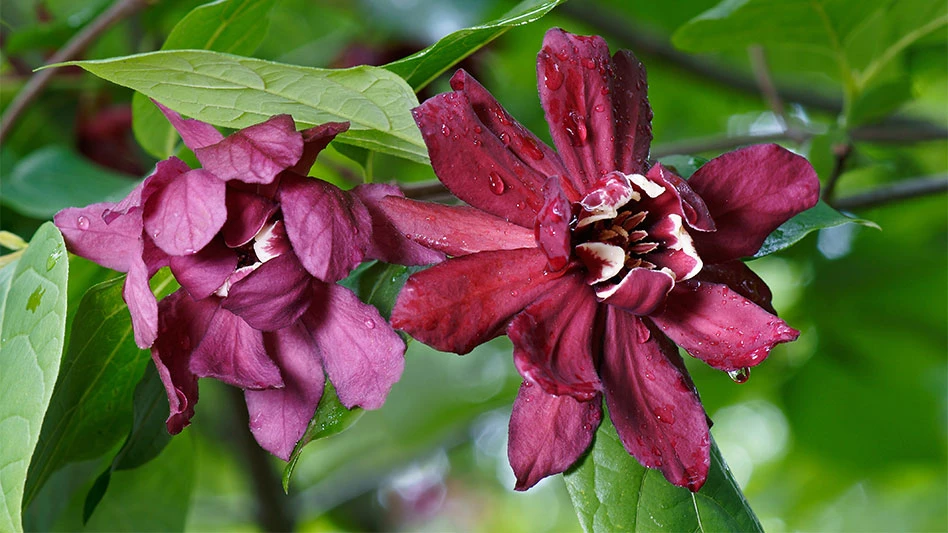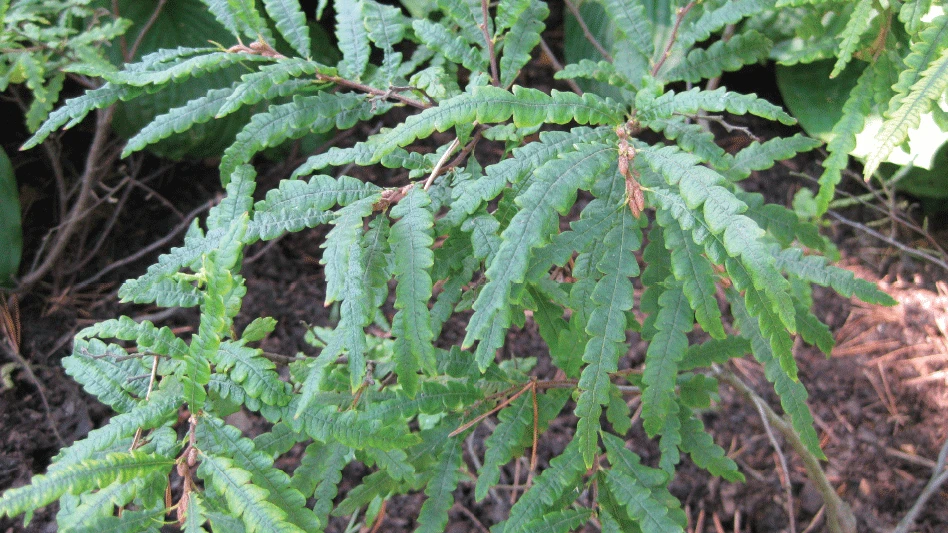 Researcher Starker Wright (left) and entomologist Tracy Leskey inspect traps baited with experimental pheromone lures for brown marmorated stink bugs. Photo by Stephen Ausmus Researcher Starker Wright (left) and entomologist Tracy Leskey inspect traps baited with experimental pheromone lures for brown marmorated stink bugs. Photo by Stephen Ausmus |
Baited black traps in a pyramid shape attract significantly more brown marmorated stink bugs (BMSB) than other traps, according to USDA scientists. Evaluating stink bug responses to different visual stimuli may help manufacturers design better traps for monitoring the bugs.
Entomologist Tracy Leskey at the Agricultural Research Service (ARS) Appalachian Fruit Research Station in Kearneysville, W.V., focused on visual stimuli that can attract the stink bugs to traps that will help growers monitor the level of infestation.
In field trials, Leskey and her colleagues found that significantly more stink bug adults and nymphs were captured in the baited black pyramid traps than in other traps. The researchers also found that more adults and nymphs were captured in a trap placed on the ground than in a commercially available trap hung from a tree limb. These prototype pyramid traps may serve as monitoring tools to assess the presence, abundance and seasonal activity of pests and natural enemies to determine the need for insecticide applications.
“We used pyramid-shaped traps of different colors—black, green, yellow, clear, white. In field trials in 2009 and 2010, we found significantly more stink bug adults and nymphs captured in the baited black pyramid traps than in the other traps,” Leskey said. “Further, more adults and nymphs were captured in a trap placed on the ground than in a commercially available baited trap from Japan that we hung from a tree limb.”
Leskey and her colleagues also found that in 2010, 2011 and 2012, stink bugs produced two generations in one year in Kearneysville, based on the presence of eggs and newly molted adults in field cage experiments. Although it has been reported that these bugs produce only one brood annually in eastern Pennsylvania, it appears that further south in the Mid-Atlantic region, they can produce two generations per year, according to Leskey.
An extensive study is being replicated in several states on the East Coast to determine how many generations may be produced in those locations.
Besides being a household nuisance, this pest is a major economic threat to producers of orchard fruits such as apple, peach, and pear; garden vegetables and row crops; and many ornamental species. Since its detection in the northeastern U.S. a decade ago, the BMSB has been detected in 38 states and has earned the distinction of being classified as the top invasive insect of interest by the USDA.
For more: www.stopbmsb.org.

Explore the March 2013 Issue
Check out more from this issue and find your next story to read.
Latest from Nursery Management
- How impending tariffs and USDA layoffs impact the horticulture industry
- Shifting the urban environment
- These companies are utilizing plastic alternatives to reduce horticultural waste
- How to create a sustainable plant nursery
- Lamiastrum galeobdolon ‘Herman’s Pride’
- One of rarest plants on earth: Tahina spectabilis
- Leading Women of Horticulture: Angela Labrum, Bailey Nurseries
- Get to know Pat Reilly with NewGen Boxwood and the American Boxwood Society






